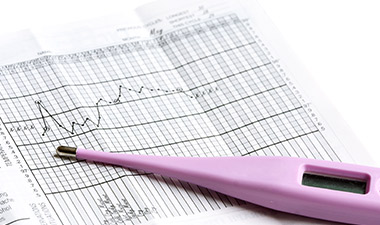If you’ve been trying to conceive, you’ve probably been offered a “Day 21 progesterone test” by your GP. It’s a standard step in fertility testing — but one that’s often misunderstood and, for many women, not particularly helpful in the way it’s timed.
Let’s explore where this advice comes from, why it often doesn’t work, and how you can get more accurate information to support your fertility journey.
The Idea Behind Day 21 Testing
Day 21 progesterone testing is based on a theoretical model of the menstrual cycle — one in which:
In this model, testing on day 21 makes sense. It should coincide with your body’s natural post-ovulation progesterone surge — the time when the uterine lining is thickening and preparing for implantation of a fertilised embryo.
But here’s the catch…
The Reality: Most Women Don’t Ovulate on Day 14
In truth, only about 10–15% of women have a textbook 28-day cycle. A healthy cycle can range from 23 to 35 days, and ovulation can occur at very different times from one woman to the next — even from one cycle to the next for the same woman.
This means that testing progesterone on day 21 might not be 7 days after ovulation. You might have ovulated earlier or later, making the results of your test misleading. A “low progesterone” result might simply reflect poor timing, not a hormonal issue.
Unfortunately, this can lead to:
So, When Should You Test Progesterone?
The key to accurate progesterone testing is not choosing a fixed calendar day — it’s about timing the test around ovulation.
You want to test 7 days after you ovulate, whenever that happens in your cycle. That’s when progesterone should be at its highest and when it matters most for supporting implantation.
To find this window, I recommend tracking:
Once you know when you ovulated, count 7 days forward — and that’s when you should have your progesterone blood test. This method gives you far more accurate and useful results.
Progesterone plays a crucial role in preparing the uterine lining for implantation and supporting early pregnancy. If levels are too low at the right time, it can make conception more difficult or increase the risk of early loss.
But if levels appear low because the test was mistimed, you could be chasing a problem that doesn’t really exist — or missing one that does.
Understanding your body’s unique rhythm is the foundation of truly personalised fertility care. This is something I work closely on with clients in our Fertility Acupuncture clinic, helping you track your cycle and time testing so we’re working with your body, not against it.
If your Day 21 test has come back with “low” progesterone, or if you’ve been trying to conceive without answers, don’t panic. The timing of the test is everything. By learning how to chart your cycle and confirm ovulation, you can take control of your fertility journey with more confidence — and get the right support at the right time.
Need help tracking your cycle or understanding your hormone results? I’m here to help. Fertility acupuncture offers a gentle, supportive way to balance hormones and optimise your body for conception — naturally and with insight.
To book a free 15-minute discovery call or skip straight to a consultation click here.
